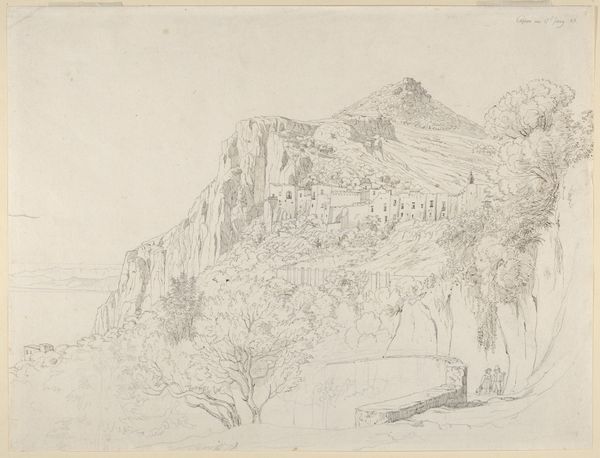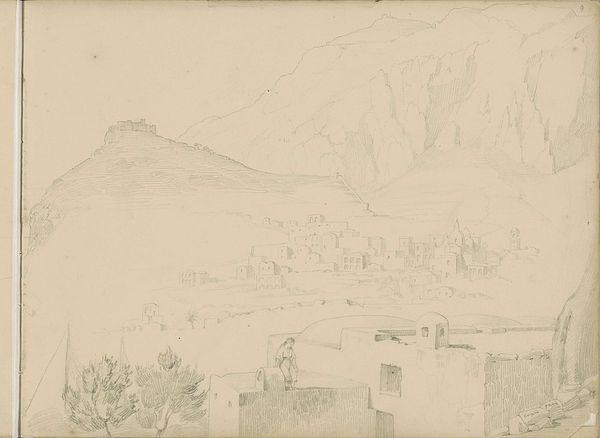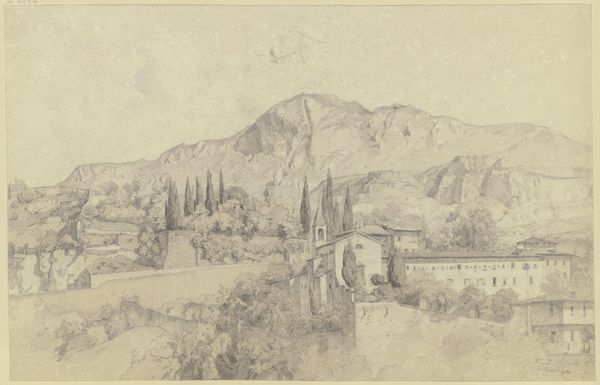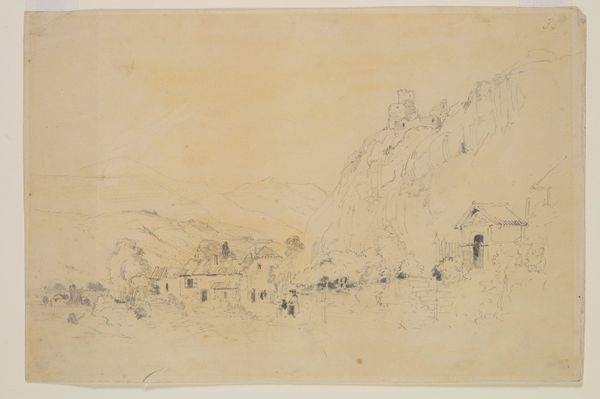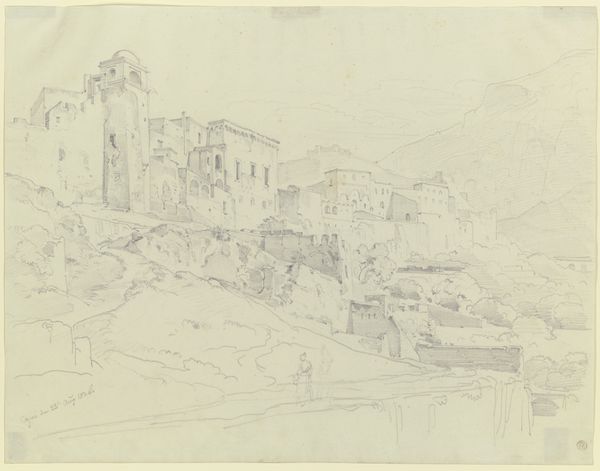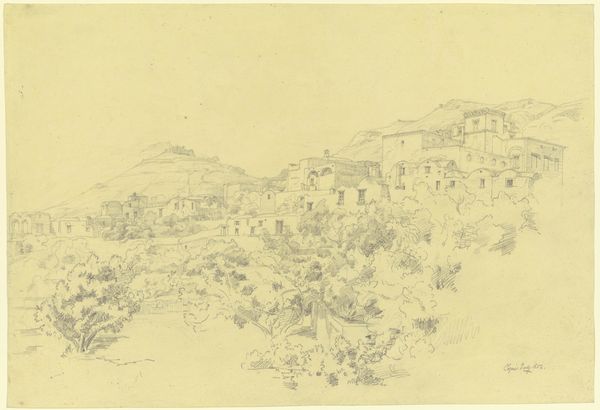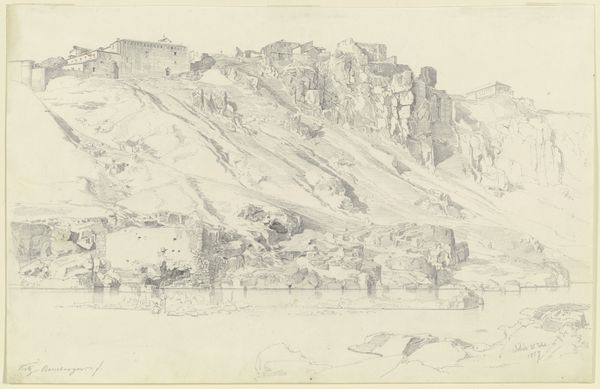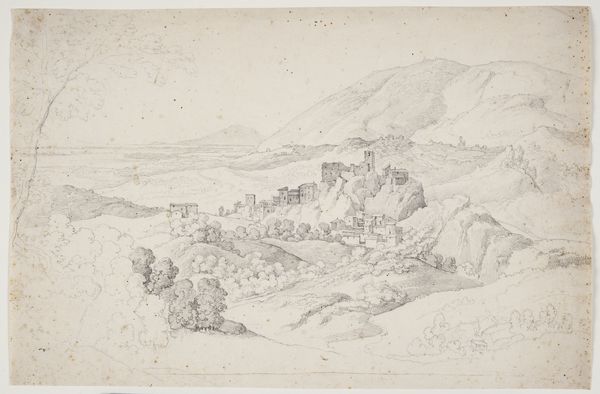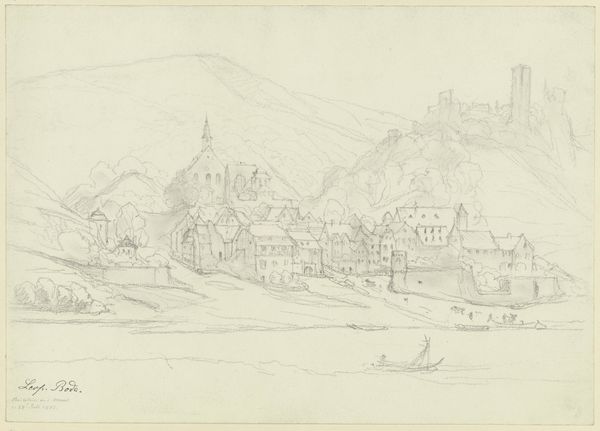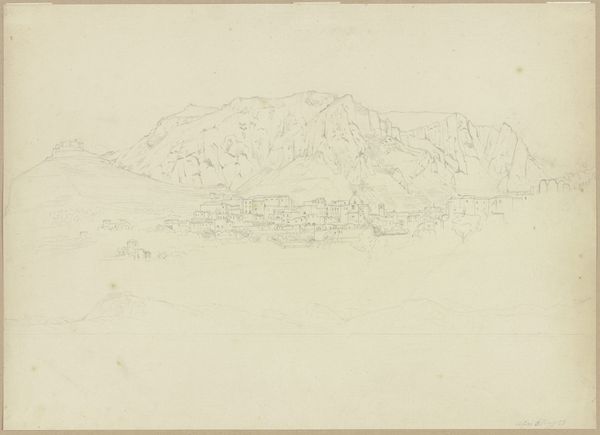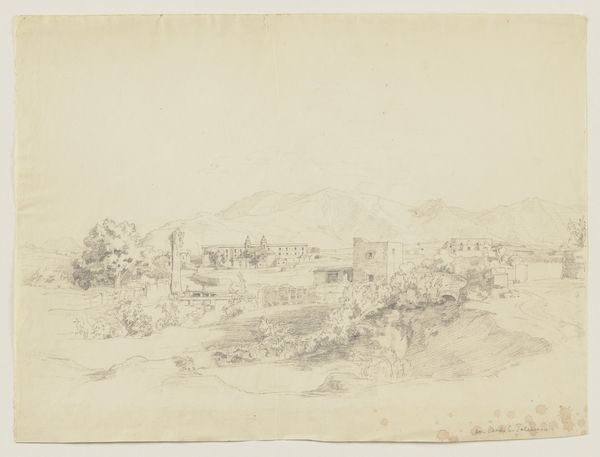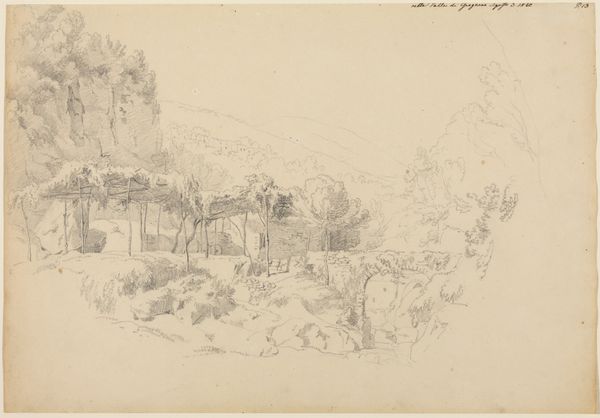
Copyright: Public Domain
Editor: This pencil drawing, "Square in Capri" by Johannes Thomas, dated to 1823, depicts a rather desolate Italian square, seemingly caught between human habitation and the powerful, imposing nature behind it. What's striking is how much raw material -- pencil, paper -- contributes to the overall delicate effect, right? What do you see when you consider this work? Curator: What interests me immediately is the directness of the drawing medium. Pencil on paper wasn't merely a preparatory tool. It provided an affordable and portable means for artists like Thomas to capture fleeting moments and locations. Consider, how the Romantic movement was partly fueled by this increased access to the "real," through industrial production and cheaper material for artists to utilize for their creative labor. Editor: So, you are seeing the materials, pencil and paper, as linked to accessibility, changing artistic production itself. Curator: Precisely. This drawing is a document of a particular kind of artistic labor, reflecting evolving material conditions of art production. It prompts questions about how the accessibility of art materials influences subject matter and style. Does it democratize representation? Editor: That’s a really interesting thought; the relatively humble pencil and paper leading to this grand Romantic scene. Curator: Right. The choice of material enabled rapid on-site sketches, reflecting the artist's immediate experience, rather than meticulous studio renderings. One must ask what effect did the industrial manufacturing and cheap labor needed to mass produce these artistic goods have upon both the artist and his consumer audience? Editor: I'm going to look at pencil drawings completely differently from now on! It makes you appreciate the broader context of something that could easily be overlooked as ‘just a sketch.’ Curator: Exactly! Focusing on the materials opens a window into understanding the artist’s working methods, access to resources, and the social forces shaping artistic production in that historical moment.
Comments
No comments
Be the first to comment and join the conversation on the ultimate creative platform.
